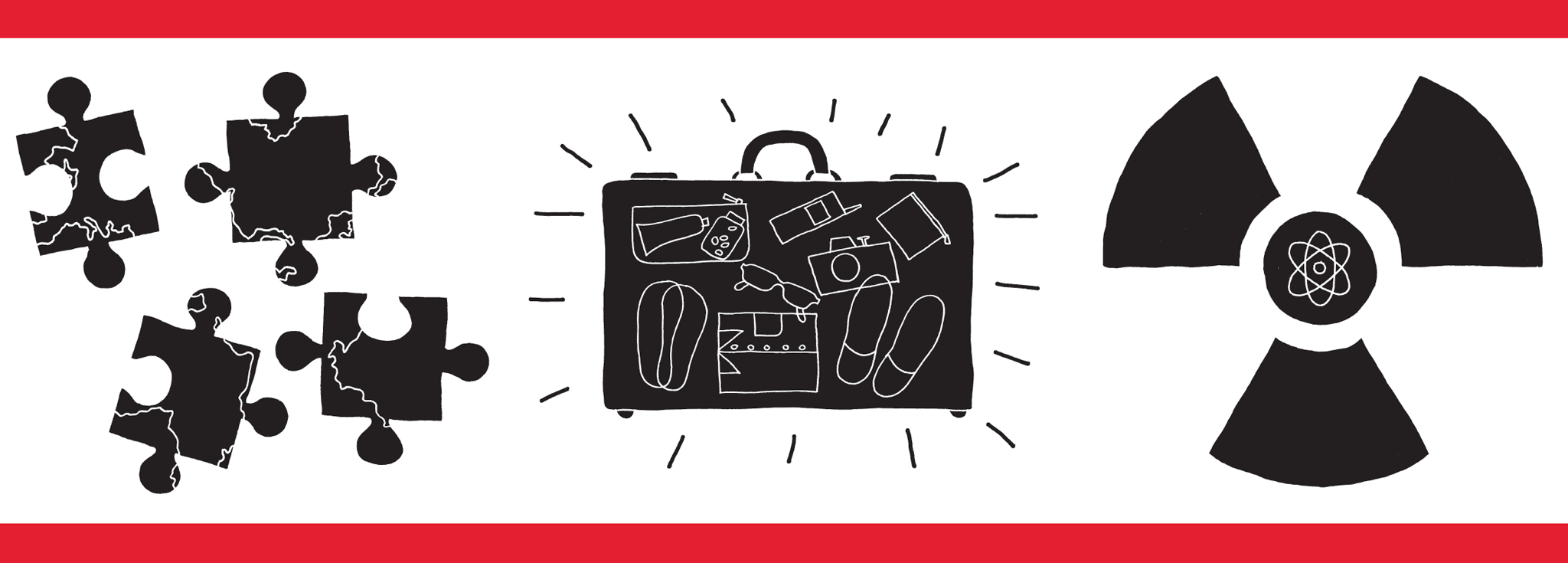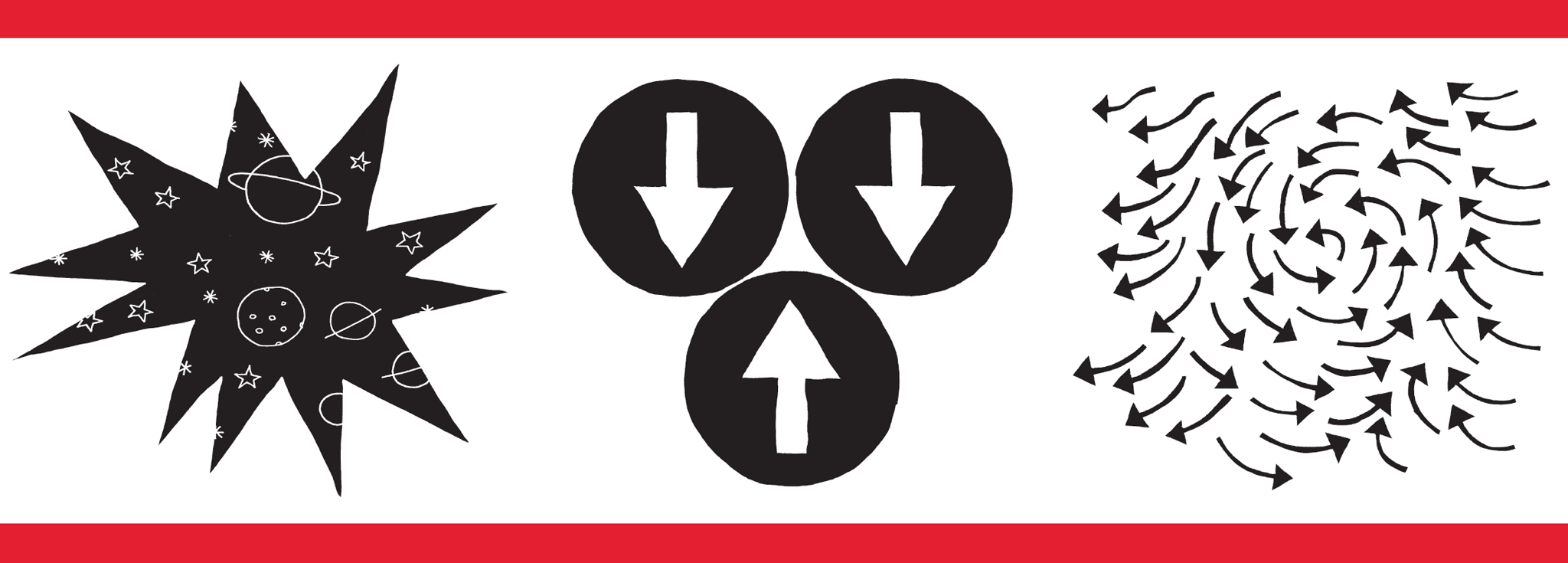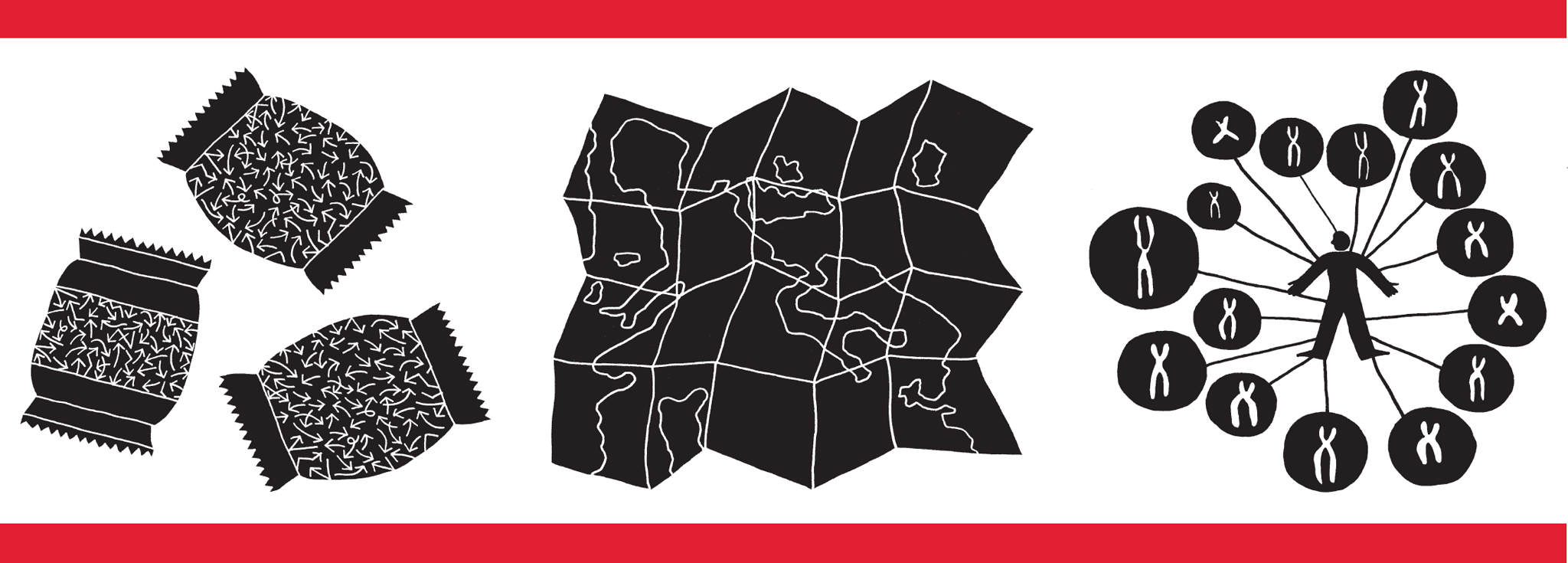
INTRODUCTION
Science is an ongoing search for truth – a perpetual struggle to discover how the Universe works that goes back to the earliest civilizations. Driven by human curiosity, it has relied on reasoning, observation, and experiment. The best known of the ancient Greek philosophers, Aristotle, wrote widely on scientific subjects and laid foundations for much of the work that has followed. He was a good observer of nature, but he relied entirely on thought and argument, and did no experiments. As a result, he got a number of things wrong. He asserted that big objects fall faster than little ones, for example, and that if one object had twice the weight of another, it would fall twice as fast. Although this is mistaken, no one doubted it until the Italian astronomer Galileo Galilei disproved the idea in 1590. While it may seem obvious today that a good scientist must rely on empirical evidence, this was not always apparent.
The scientific method
A logical system for the scientific process was first put forward by the English philosopher Francis Bacon in the early 17th century. Building on the work of the Arab scientist Alhazen 600 years earlier, and soon to be reinforced by the French philosopher René Descartes, Bacon’s scientific method requires scientists to make observations, form a theory to explain what is going on, and then carry out an experiment to see whether the theory works. If it seems to be true, then the results may be sent out for peer review, in which people working in the same or a similar field are invited to pick holes in the argument, and so falsify the theory, or to repeat the experiment to make sure that the results are correct.
Making a testable hypothesis or a prediction is always useful. English astronomer Edmond Halley, observing the comet of 1682, realized that it was similar to comets reported in 1531 and 1607, and suggested that all three were the same object, in orbit round the Sun. He predicted that it would return in 1758, and he was right, though only just – it was spotted on 25 December. Today, the comet is known as Halley’s Comet. Since astronomers are rarely able to perform experiments, evidence can come only from observation.
Experiments may test a theory, or be purely speculative. When the New Zealand-born physicist Ernest Rutherford watched his students fire alpha particles at gold leaf in a search for small deflections, he suggested putting the detector beside the source, and to their astonishment some of the alpha particles bounced back off the paper-thin foil. Rutherford said it was as though an artillery shell had bounced back off tissue paper – and this led him to a new idea about the structure of the atom.
An experiment is all the more compelling if the scientist, while proposing a new mechanism or theory, can make a prediction about the outcome. If the experiment produces the predicted result, the scientist then has supporting evidence for the theory. Even so, science can never prove that a theory is correct; as the 20th-century philosopher of science Karl Popper pointed out, it can only disprove things. Every experiment that gives predicted answers is supporting evidence, but one experiment that fails may bring an entire theory crashing down.
Over the centuries, long-held concepts such as a geocentric Universe, the four bodily humours, the fire-element phlogiston, and a mysterious medium called aether have all been disproved and replaced with new theories. These in turn are only theories, and may yet be disproved, although in many cases this is unlikely given the evidence in their support.
"All truths are easy to understand once they are discovered; the point is to discover them."
Galileo Galilei
Progression of ideas
Science rarely proceeds in simple, logical steps. Discoveries may be made simultaneously by scientists working independently, but almost every advance depends in some measure on previous work and theories. One reason for building the vast apparatus known as the Large Hadron Collider, or LHC, was to search for the Higgs particle, whose existence was predicted 40 years earlier, in 1964. That prediction rested on decades of theoretical work on the structure of the atom, going back to Rutherford and the work of Danish physicist Niels Bohr in the 1920s, which depended on the discovery of the electron in 1897, which in turn depended on the discovery of cathode rays in 1869. Those could not have been found without the vacuum pump and, in 1799, the invention of the battery – and so the chain goes back through decades and centuries. The great English physicist Isaac Newton famously said, “If I have seen further, it is by standing on the shoulders of giants.” He meant primarily Galileo, but he had probably also seen a copy of Alhazen’s Optics.

The first scientists
The first philosophers with a scientific outlook were active in the ancient Greek world during the 6th and 5th centuries BCE. Thales of Miletus predicted an eclipse of the Sun in 585 BCE; Pythagoras set up a mathematical school in what is now southern Italy 50 years later, and Xenophanes, after finding sea shells on a mountain, reasoned that the whole Earth must at one time have been covered by sea.
In Sicily in the 4th century BCE, Empedocles asserted that earth, air, fire, and water are the “fourfold roots of everything”. He also took his followers up to the volcanic crater of Mt Etna and jumped in, apparently to show he was immortal – and as a result we remember him to this day.
Star-gazers
Meanwhile, in India, China, and the Mediterranean, people tried to make sense of the movements of the heavenly bodies. They made star maps – partly as navigational aids – and named stars and groups of stars. They also noted that a few traced irregular paths when viewed against the “fixed stars”. The Greeks called these wandering stars “planets”. The Chinese spotted Halley’s comet in 240 BCE and, in 1054, a supernova that is now known as the Crab Nebula.
"If you would be a real seeker after truth, it is necessary that at least once in your life you doubt, as far as possible, all things."
René Descartes
House of Wisdom
In the late 8th century CE, the Abbasid caliphate set up the House of Wisdom, a magnificent library, in its new capital, Baghdad. This inspired rapid advances in Islamic science and technology. Many ingenious mechanical devices were invented, along with the astrolabe, a navigational device that used the positions of the stars. Alchemy flourished, and techniques such as distillation appeared. Scholars at the library collected all the most important books from Greece and from India, and translated them into Arabic, which is how the West later rediscovered the works of the ancients, and learned of the “Arabic” numerals, including zero, that were imported from India.

Birth of modern science
As the monopoly of the Church over scientific truth began to weaken in the Western world, the year 1543 saw the publication of two ground-breaking books. Belgian anatomist Andreas Vesalius produced De Humani Corporis Fabrica, which described his dissections of human corpses with exquisite illustrations. In the same year, Polish physician Nicolaus Copernicus published De Revolutionibus Orbium Coelestium, which stated firmly that the Sun is the centre of the Universe, overturning the Earth-centred model worked out by Ptolemy of Alexandria a millennium earlier.
In 1600, English physician William Gilbert published De Magnete in which he explained that compass needles point north because Earth itself is a magnet. He even argued that Earth’s core is made of iron. In 1623, another English physician, William Harvey, described for the first time how the heart acts as a pump and drives blood around the body, thereby quashing forever earlier theories that dated back 1,400 years to the Greco-Roman physician Galen. In the 1660s, Anglo-Irish chemist Robert Boyle produced a string of books, including The Sceptical Chymist, in which he defined a chemical element. This marked the birth of chemistry as a science, as distinct from the mystical alchemy from which it arose.
Robert Hooke, who worked for a time as Boyle’s assistant, produced the first scientific bestseller, Micrographia, in 1665. His superb fold-out illustrations of subjects such as a flea and the eye of a fly opened up a microscopic world no one had seen before. Then in 1687 came what many view as the most important science book of all time, Isaac Newton’s Philosophiæ Naturalis Principia Mathematica, commonly known as the Principia. His laws of motion and principle of universal gravity form the basis for classical physics.

Elements, atoms, evolution
In the 18th century, French chemist Antoine Lavoisier discovered the role of oxygen in combustion, discrediting the old theory of phlogiston. Soon a host of new gases and their properties were being investigated. Thinking about the gases in the atmosphere led British meteorologist John Dalton to suggest that each element consisted of unique atoms, and propose the idea of atomic weights. Then German chemist August Kekulé developed the basis of molecular structure, while Russian inventor Dmitri Mendeleev laid out the first generally accepted periodic table of the elements.
The invention of the electric battery by Alessandro Volta in Italy in 1799 opened up new fields of science, into which marched Danish physicist Hans Christian Ørsted and British contemporary Michael Faraday, discovering new elements and electromagnetism, which led to the invention of the electric motor. Meanwhile, the ideas of classical physics were applied to the atmosphere, the stars, the speed of light, and the nature of heat, which developed into the science of thermodynamics.
Geologists studying rock strata began to reconstruct Earth’s past. Palaeontology became fashionable as the remains of extinct creatures began to turn up. Mary Anning, an untutored British girl, became a world-famous assembler of fossil remains. With the dinosaurs came ideas of evolution, most famously from British naturalist Charles Darwin, and new theories on the origins and ecology of life.
"I seem to have been only like a boy playing on the seashore, and diverting myself in now and then finding a smoother pebble…whilst the great ocean of truth lay all undiscovered before me."
Isaac Newton
Uncertainty and infinity
At the turn of the 20th century, a young German named Albert Einstein proposed his theory of relativity, shaking classical physics and ending the idea of an absolute time and space. New models of the atom were proposed; light was shown to act as both a particle and a wave; and another German, Werner Heisenberg, demonstrated that the Universe was uncertain.
What has been most impressive about the last century, however, is how technical advances have enabled science to advance faster than ever before, leap-frogging ideas with increasing precision. Ever more powerful particle colliders revealed new fundamental units of matter. Stronger telescopes showed that the Universe is expanding, and started with a Big Bang. The idea of black holes began to take root. Dark matter and dark energy, whatever they were, seemed to fill the Universe, and astronomers began to discover new worlds – planets in orbit around distant stars, some of which may even harbour life. British mathematician Alan Turing thought of the universal computing machine, and within 50 years we had personal computers, the worldwide web, and smart phones.
Secrets of life
In biology, chromosomes were shown to be the basis of inheritance and the chemical structure of DNA was decoded. Just 40 years later this led to the human genome project, which seemed a daunting task in prospect, and yet, aided by computing, got faster and faster as it progressed. DNA sequencing is now an almost routine laboratory operation, gene therapy has moved from a hope into reality, and the first mammal has been cloned.
As today’s scientists build on these and other achievements, the relentless search for the truth continues. It seems likely that there will always be more questions than answers, but future discoveries will surely continue to amaze.
"Reality is merely an illusion, albeit a very persistent one."
Albert Einstein